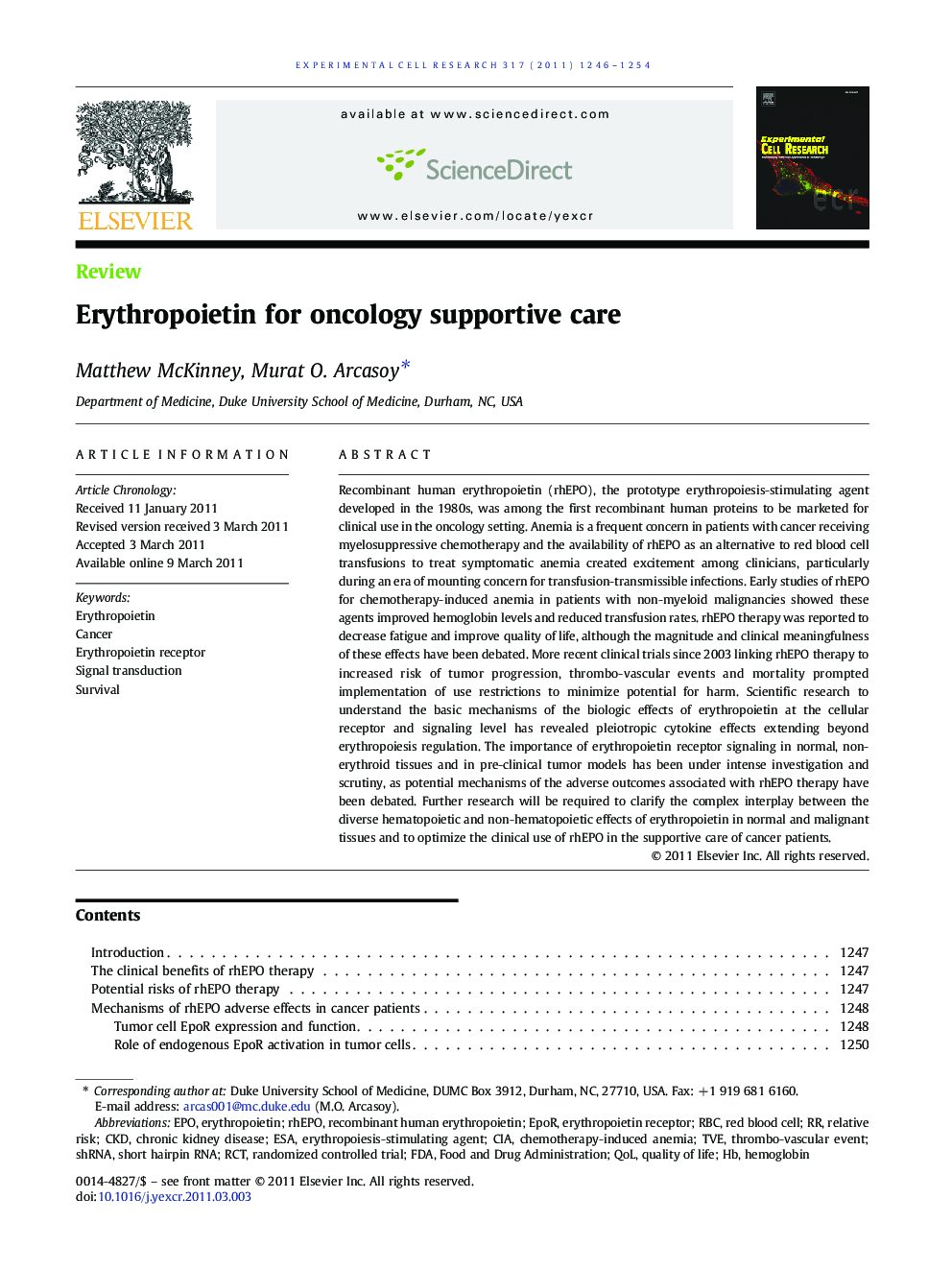| کد مقاله | کد نشریه | سال انتشار | مقاله انگلیسی | نسخه تمام متن |
|---|---|---|---|---|
| 2131234 | 1086629 | 2011 | 9 صفحه PDF | دانلود رایگان |

Recombinant human erythropoietin (rhEPO), the prototype erythropoiesis-stimulating agent developed in the 1980s, was among the first recombinant human proteins to be marketed for clinical use in the oncology setting. Anemia is a frequent concern in patients with cancer receiving myelosuppressive chemotherapy and the availability of rhEPO as an alternative to red blood cell transfusions to treat symptomatic anemia created excitement among clinicians, particularly during an era of mounting concern for transfusion-transmissible infections. Early studies of rhEPO for chemotherapy-induced anemia in patients with non-myeloid malignancies showed these agents improved hemoglobin levels and reduced transfusion rates. rhEPO therapy was reported to decrease fatigue and improve quality of life, although the magnitude and clinical meaningfulness of these effects have been debated. More recent clinical trials since 2003 linking rhEPO therapy to increased risk of tumor progression, thrombo-vascular events and mortality prompted implementation of use restrictions to minimize potential for harm. Scientific research to understand the basic mechanisms of the biologic effects of erythropoietin at the cellular receptor and signaling level has revealed pleiotropic cytokine effects extending beyond erythropoiesis regulation. The importance of erythropoietin receptor signaling in normal, non-erythroid tissues and in pre-clinical tumor models has been under intense investigation and scrutiny, as potential mechanisms of the adverse outcomes associated with rhEPO therapy have been debated. Further research will be required to clarify the complex interplay between the diverse hematopoietic and non-hematopoietic effects of erythropoietin in normal and malignant tissues and to optimize the clinical use of rhEPO in the supportive care of cancer patients.
Journal: Experimental Cell Research - Volume 317, Issue 9, 15 May 2011, Pages 1246–1254